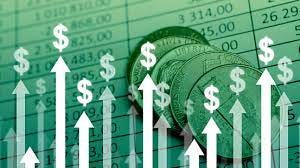I have written about inflation before, most recently on November 21. In that post, I made some brief comments about the rapidly changing inflation picture and raised several questions for your consideration, all of which boiled down essentially to this: What is going on with inflation and what if anything can the Fed do about it?
Well, the inflation picture has continued to change since that post and it now appears to be even more complex than previously thought. The reported inflation numbers have continued to increase, but remain volatile with changing dynamics across the various CPI components of goods and services. Strong anecdotal evidence (although to date limited empirical evidence) also suggests that rising prices are beginning to impact inflation expectations. And all of this is happening just as the global covid pandemic enters another new phase, with the Omicron variant rapidly spreading across the world. (Oh no, even Davos had to be postponed. This must really be serious!)
In response, the Fed has dropped the “transitory” language from its formal inflation communications, accelerated the taper of its QE bond purchases (now targeted to end at the end of March), and signaled an earlier and more aggressive increase in future short-term policy rates. These are very significant moves by central banking standards and the capital markets are taking them seriously. For a more detailed look at the rapid evolution of the Fed’s thinking, see the latest FOMC statement here and compare these two WSJ reports published on December 6 and December 15. And for more on the economic (and inflationary) impact of Omicron, and how this may influence the views of central bankers, read here.
These are all significant developments, the expected impact of which is only beginning to be reflected in the capital markets. The stock and energy markets are both down significantly in the past few days and US Treasury bond prices are up (yields down), with the UST 10-year yield again below 1.4%, reflecting the net impact of tightening central bank policy and renewed covid concerns along with a more pronounced “risk off” tilt. For more on the recent capital markets response, read here.
At some point in the future, we are going to understand better than we do now what has really transpired over the past few years and we will be able then to conduct a more thoughtful analysis of the various policy responses to covid, including not only central bank monetary policy but also government fiscal and public health policy. This analysis will necessarily be framed in the context of some controversial policy decisions taken a decade or more ago, during and after the last global financial crisis, with QE being a prime example. I would not be at all surprised if we then conclude, with the benefit of hindsight, that some of these past and more recent policy decisions were ill advised, with some large and long lasting unintended or unanticipated consequences.
But policymakers (and the rest of us) have to make big decisions to address complex problems in real time, often without the benefit of a clear understanding of the current facts on the ground and with significant risks associated with all possible courses of action (or inaction). Good decisions sometimes result in bad outcomes; bad decisions sometimes result in good outcomes; and sometimes the outcomes (good or bad) look very different after a few years than they did initially.
So back to my opening question: What is going on with inflation and what if anything can the Fed do about it? My answer, for now at least, is “I’m not sure”. And I don’t think the Fed is either.
This will likely be my last post until after Christmas, so let me wish you all a very happy and healthy holiday season.


